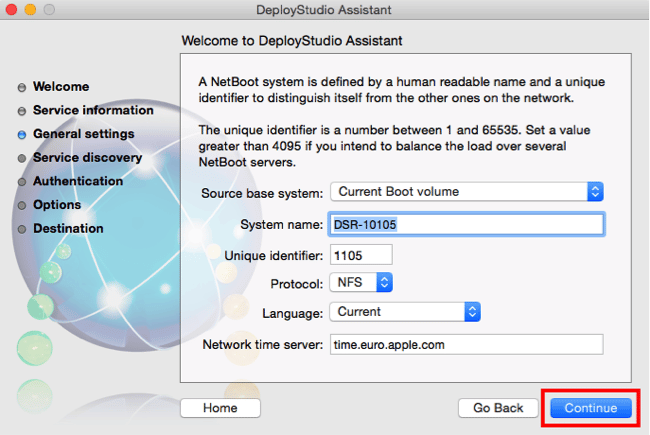
This distinctive firmware layer makes available at the client the functions of a basic Universal Network Device Interface (UNDI), a minimalistic UDP/ IP stack, a Preboot (DHCP) client module and a TFTP client module, together forming the PXE application programming interfaces (APIs) used by the NBP when needing to interact with the services offered by the server counterpart of the PXE environment. Within the PXE schema the client side of the provisioning equation is an integral part of the PXE standard and it is implemented either as a Network Interface Card (NIC) BIOS extension or current devices in UEFI code. The PXE environment makes use of several standard client‑server protocols including DHCP and TFTP (now defined by the 1992 published RFC 1350).
#BUILD A NETBOOT SERVER UPDATE#
PXE version 2.0 was released in December 1998, and the update 2.1 was made public in September 1999. The Preboot Execution Environment (PXE) was introduced as part of the Wired for Management framework by Intel and is described in the specification published by Intel and SystemSoft. The pioneering TFTP/BOOTP/DHCP approach fell short, as at the time, it did not define the required standardized client side of the provisioning environment. BOOTP implementation difficulties, among other reasons, eventually led to the development of the Dynamic Host Configuration Protocol standard RFC 2131 (DHCP) published in 1997.

It was followed shortly after by the Bootstrap Protocol standard RFC 951 (BOOTP), published in 1985, which allowed a disk-less client machine to discover its own IP address, the address of a TFTP server, and the name of an NBP to be loaded into memory and executed. One of the first attempts in this regard was the Bootstrap Loading using TFTP standard RFC 906, published in 1984, which established the 1981 published Trivial File Transfer Protocol (TFTP) standard RFC 783 to be used as the standard file transfer protocol for bootstrap loading. In this case the availability and subjection to standards are a key factor required to guarantee the network boot process system interoperability. Additionally, the Network Bootstrap Program (NBP) which is initially downloaded and run must be built using a client firmware layer (at the device to be bootstrapped via PXE) providing a hardware independent standardized way to interact with the surrounding network booting environment. This goal requires a client to use a set of pre-boot services, based on industry standard network protocols.

#BUILD A NETBOOT SERVER SOFTWARE#
Since the beginning of computer networks, there has been a persistent need for client systems which can boot appropriate software images, with appropriate configuration parameters, both retrieved at boot time from one or more network servers.


 0 kommentar(er)
0 kommentar(er)
